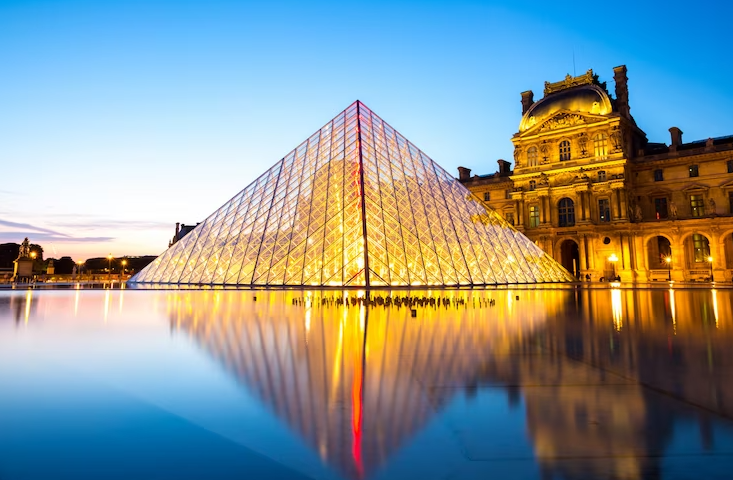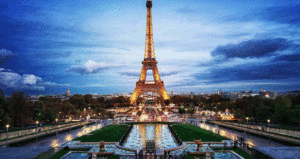The Louvre Museum: A Cultural Jewel in the Heart of Paris
Introduction:
The Louvre Museum, located in the heart of Paris, France, is one of the world’s largest and most visited art museums. This iconic institution has a rich history that spans centuries, and its collection includes a diverse array of artworks and artifacts from various civilizations. The Louvre is not only a repository of artistic masterpieces but also a symbol of cultural heritage, attracting millions of visitors annually.

Historical Background:
The Louvre’s history dates back to the late 12th century when it was originally built as a fortress under the reign of Philip II. Over the years, the structure underwent numerous transformations, evolving from a defensive fortress to a royal palace. In the 16th century, during the Renaissance, King Francis I initiated the construction of the Grand Louvre, expanding the palace and adding elements of classical architecture.
The Louvre became a public museum during the French Revolution in 1793, symbolizing a shift from royal exclusivity to public accessibility. The museum’s collection grew significantly through acquisitions, donations, and military campaigns that brought art treasures from around the world.

Architectural Marvels:
The Louvre’s architecture is a testament to the evolution of French art and design. The museum comprises several wings and pavilions, each with its unique architectural style. The iconic glass pyramid entrance, designed by architect I. M. Pei and inaugurated in 1989, is a modern addition that harmoniously blends with the classical architecture of the historic building.
The museum’s vast size and architectural complexity make it a labyrinthine experience for visitors, offering surprises at every turn. The Richelieu, Sully, and Denon wings house various collections, ensuring that visitors encounter a diverse range of artistic styles and historical periods.

Masterpieces on Display:
One of the Louvre’s most celebrated attractions is the Mona Lisa, painted by Leonardo da Vinci. This enigmatic portrait, known for the subject’s captivating smile, draws visitors from around the globe. Other renowned artworks in the museum include the ancient Greek statue Venus de Milo, the majestic Winged Victory of Samothrace, and Eugene Delacroix’s Liberty Leading the People.
The Louvre’s collection spans over 9,000 years of history and encompasses various artistic disciplines, including painting, sculpture, decorative arts, and ancient artifacts. The Egyptian Antiquities section features mummies, sarcophagi, and hieroglyphics, while the Islamic Art collection showcases exquisite carpets, ceramics, and manuscripts.
Cultural Significance:
Beyond its artistic treasures, the Louvre holds cultural significance as a symbol of France’s commitment to preserving and sharing its heritage. The museum plays a crucial role in education, offering programs and resources for students, scholars, and art enthusiasts. Its outreach initiatives, including traveling exhibitions and digital resources, make art accessible to people worldwide.
The Louvre’s influence extends beyond the confines of its walls, shaping global conversations about art, history, and culture. It serves as a beacon for the promotion of artistic expression and cross-cultural understanding, fostering a sense of unity among diverse communities.
Challenges and Innovations:
Managing a museum of such magnitude comes with its challenges. Preserving and protecting the artworks, ensuring visitor safety, and adapting to technological advancements are ongoing priorities. The Louvre has embraced innovation, incorporating digital technologies to enhance the visitor experience. Virtual tours, interactive displays, and multimedia guides provide insightful narratives, enriching the understanding of the artworks on display.
The Future of the Louvre:
As the Louvre looks toward the future, it faces the dual challenge of preserving its historical identity while adapting to the evolving needs of a global audience. The museum continues to acquire new artworks, expand its educational programs, and engage with contemporary artists, ensuring its relevance for generations to come.
Conclusion:
The Louvre Museum stands as a testament to the enduring power of art and culture. Its rich history, architectural splendor, and diverse collection make it a cultural jewel that captivates and inspires millions. Beyond being a repository of masterpieces, the Louvre serves as a bridge connecting people across time and space, fostering an appreciation for the beauty and diversity of human creativity. As visitors wander through its halls, they not only encounter the masterpieces of the past but also contribute to the ongoing narrative of this extraordinary cultural institution.


